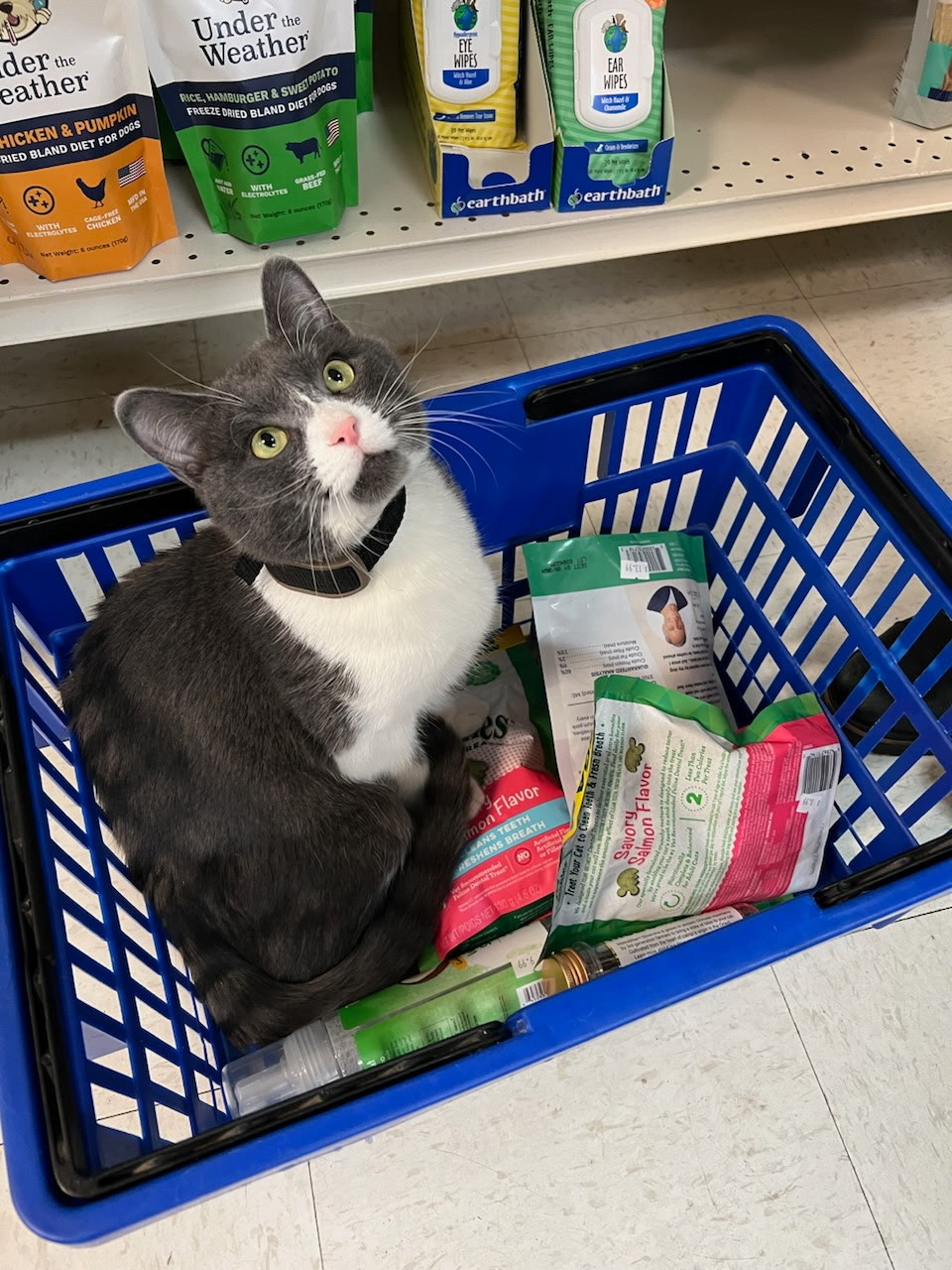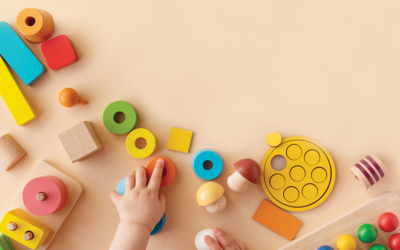Just like on Tinder, falling in love with a profile on NOCO Humane’s website doesn’t ensure eternal happiness.
This is why NOCO Humane requires an in-person meeting with any dog or cat up for adoption before you sign the papers. While there are many ways to prepare for a lifetime bond with a pet, the first step may be the most important: You need to find a good match.
NOCO Humane beefed up its behavior team in recent years to increase the odds of making matches that result in happy pets and happy humans. The goal, of course, is for every animal to find a forever home: Aside from housing, personality conflicts and behavior issues are the biggest reasons why owners give up their pets.
“We’ve really put a focus on retention,” says Scott Wendelberger, marketing and community outreach program manager for NOCO Humane. “Otherwise they are back here, and that’s another kennel used up. Even if you haven’t adopted from us, feel free to call us, and we can provide any tips or guidance.”
Stocking up on supplies and spending time training your new furry friend are important, and this guide should help you with that. But matching your desires with the breed and personality of an animal can help you avoid problems altogether.
“I think it’s looking at the needs of the animal,” says Beth Friedman, who owns Canine Companion Consulting in Fort Collins with her husband, Wayne Bolen. “Is it high energy? If the dog is bored because you can’t put in the time, they will likely find their own ways to expel that energy, and we typically don’t appreciate it when dogs figure out how to fulfill their own needs.”

Photo courtesy of Poudre Pet & Feed Supply
Things to do before you adopt
1) Listen to the experts
Not only do shelter workers, foster parents and breeders know the tendencies of a breed, but they also know the personality of the dog or cat you’re hoping to adopt. They can probably tell you if the animal will get along with small children and other pets and whether they’ll need a backyard with a tall fence. They can also tell you what kind of medical attention a senior pet may need and give you advice on what pet food to buy. They are there to answer any questions you have and can even sense when a dog or cat may not be the best fit.
2) Get the right supplies
Poudre Pet & Feed Supply offers a pet starter kit for both dogs and cats and gives discounts to those who adopt from some shelters (including NOCO Humane), says Megan Borgmeyer, Poudre Pet’s creative marketing director. Store employees can help you find the right supplies for the breed or size of dog you hope to get, even if you haven’t adopted a specific one yet. They can recommend toys, training treats, kennels, leashes and harnesses and give you specific supplies for puppies, kittens, senior animals and those with special needs.
“The first time you get a pet, it can be overwhelming,” Borgmeyer says. “There are so many different brands of food, for instance. But our staff is able and ready.”
NOCO Humane and many other shelters allow people to place a 24-hour hold on any animal, which can help a prospective owner gather supplies and prepare.
“That’s a nice thing people can utilize,” Wendelberger says. “They need a day to get the house ready. We’re not forcing adopters to make impulse decisions that way.”
3) Be aware of the costs
“Owning a pet costs more than the initial adoption fee,” Wendelberger says. This includes vet bills, though many shelters partner with vets to offer free wellness checks with every adoption. Food and supplies are regular expenses throughout the year, and grooming, pet sitting and new toys also add up.
Rental units and hotels typically charge a pet fee although, thanks to a recently approved state law, landlords can’t charge more than $35 per month or 1.5 percent of rent (whichever is greater) or require deposits of more than $300.
Many shelters charge more for puppies, with adoption fees of $500 or more, because of their demand.
“We don’t see one as more valuable than the other, but we do recognize that some will get adopted later than others,” Wendelberger says. “We use that money to offset the costs of providing care for the animals who have to stay longer.”
What to do once you bring your pet home
1) Understand the “3-3-3” rule
This rule is a timeline for helping your new pet adjust, and it’s something all experts in this article advocate.
• Three days: decompression. The dog or cat will be overwhelmed and may seem scared, hide or not eat much. Provide them with a safe, quiet space, like a crate or bed, and be patient.
• Three weeks: bonding and training. The new pet will learn your routine, start to settle in and show their true personality. Focus on positive reinforcement and basic training and build a bond through play and walks.
• Three months: socialization and trust. The dog or cat should be comfortable, trust the family and be well socialized. Gradually introduce new people and environments, continue with training and your routine and build a strong bond through consistent, positive interactions.
2) Establish patterns and stick to them
New pets are full of uncertainty during those first few days, and a consistent routine, such as feeding them at specific times and letting them outside to go potty first thing in the morning, are good ways to help them relax. Experts recommend sticking to a routine even on weekends.
They also say to reinforce good habits, like going potty outside or using a litter box and eating their food, with treats and praise. If your routine involves a little playtime before work, that’s great too.
“Often we don’t get called unless there’s a problem,” Friedman says. “If you create positive habits from the start, you don’t have those problems.”
Routines can also help dogs and cats with anxiety because they create structure. This can even help with separation anxiety, a serious but common problem that can lead to destruction and despair.
“There are a lot of anxious dogs in the world,” Bolen says. “They do well with structure and knowing what to expect.”
3) Take your pet for walks (even cats)
Walks are a great way to start the day and greet your pet when you get home from work, as they help establish a routine and provide enrichment.
“It’s good for them to go sniff the world,” Bolen says. “There’s so much more that they can experience. Sniffing is really enticing to them. They need it.”
Those sniffs are likely the best part of the walk for a dog, so a stroll around the block may be enough.
“You don’t have to walk 10 miles,” Friedman says. “It’s like us looking at a beautiful sunset.”
4) Monitor your pets’ toy collection
Provide a range of toys in the first few weeks after adoption so you can figure out what your pet likes. For dogs, options can include one squeaker, one plush toy, one rubber toy, one rope, a ball and one tough chew toy. Cats may be drawn to household items such as a ball of foil or an oven mitt, and if they’re using your chair to scratch, try providing them with a scratching post. Cats also like towers and safe places to climb.
“It’s hard to know what toy will be super intriguing to them at first,” Borgmeyer says. “Once you figure that out, you can always come back.”
5) Know that you can teach an old dog new tricks
Training shouldn’t end at the puppy stage. If you adopt a senior dog, you can teach them new routines and habits and even a few tricks, Friedman says. As proof, Friedman owns a 12-year-old senior dog she continues to train. It’s always good to work with your dog on leash walking, along with polite greetings and “leave it,” she says. The idea is to keep building a relationship with your dog throughout their life.
“The more humans understand why their dogs are doing something and how we can change it, the more dogs understand their humans and relate better,” Friedman says. “Those are great skills.”
Get the Right Gear
Poudre Pet & Feed Supply’s starter kits contain many of the following items:
Kitten/cat supplies:
Litter
Litter box
Litter scoop
Food dish or feeder
Bag of treats
Water fountain
Toys
Wet food
Grooming tool (nail trimmer, brush, etc.)
ID tag
Bed
Carrier
Carpet stain/odor remover
Puppy/dog supplies:
Crate/kennel
Crate pad
Leash
Collar
ID tag
Shampoo
Bed
Water bowl or fountain
Food dish or feeder
Bag of treats
Toys
Grooming tool (nail trimmer, brush, etc.)
Carpet stain/odor remover







